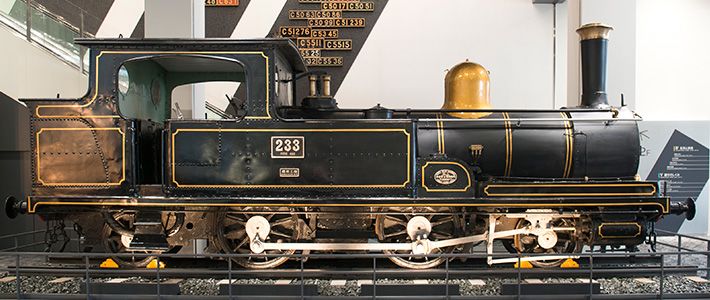
Kyoto Railway Museum: A Showcase of Japan’s Rail Heritage
Guideto Japan
Culture- English
- 日本語
- 简体字
- 繁體字
- Français
- Español
- العربية
- Русский
Not Just a History Museum
A new museum showcasing the full gamut of Japan’s rail heritage opened to the public on April 29, 2016. Owned by JR West, the Kyoto Railway Museum is located on the former grounds of the Umekōji Steam Locomotive Museum and inherits both the rolling and fixed stock of the old gallery.
The modernized and expanded museum houses 53 trains, ranging from the earliest steam locomotives to the Shinkansen, including many that had been on display at the Modern Transportation Museum in Osaka before it closed in 2014 due to aging facilities. Visitors are free to touch the carriages, and there are simulators allowing visitors to experience driving a train.
A Procession of Rail Legends
After passing through the entrance, visitors come to the 100-meter-long Promenade area designed to look like station platforms, where a variety of trains are on display.
Among them are Japan’s largest steam locomotive the C62, which served many express routes; a Shōnan 80 series train that was Japan’s first to run routes spanning over 100 kilometers; and a 0 series Shinkansen, the pioneering high-speed “bullet train” introduced in 1964. Behind them are many other transport legends that drove the Japanese miracle of postwar reconstruction and high economic growth.
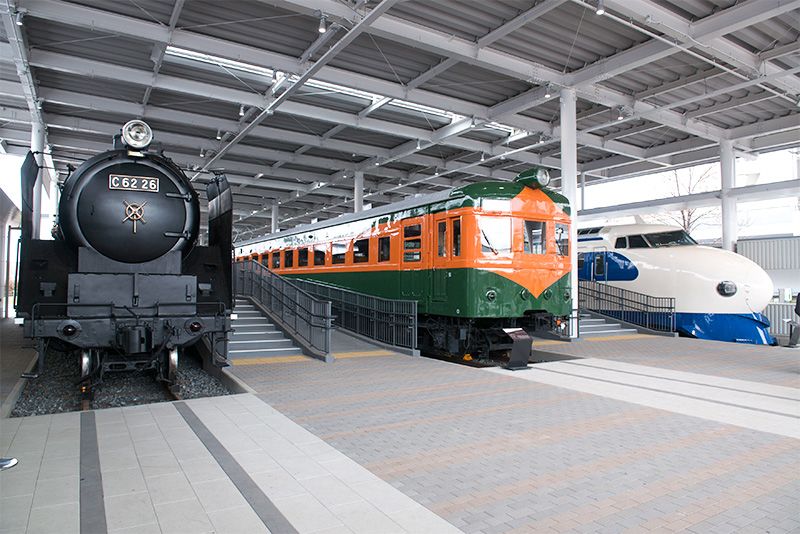 From left, a class C62 steam locomotive (built 1948), an 80 series electric train (built 1950), and the 0 series Shinkansen (built 1964).
From left, a class C62 steam locomotive (built 1948), an 80 series electric train (built 1950), and the 0 series Shinkansen (built 1964).
Past the Promenade is the Main Building featuring a full collection of historically significant carriages. The 12 on display include a class 230 steam engine—the first to be produced domestically—and a 500 series Shinkansen, the world’s first passenger train to operate at speeds of 300 kilometers per hour.
Next to the Shinkansen is a track for a maintenance bicycle that visitors can pedal to get a feel for track inspection work. There are also a number of interactive exhibits explaining how trains and rail facilities work. One corridor shows the underside of an electric car, while another gives a bird’s eye view of the roof. At the back of the first floor of the Main Building is a siding that connects to existing JR West tracks, enabling cars currently in service to be exhibited as well.
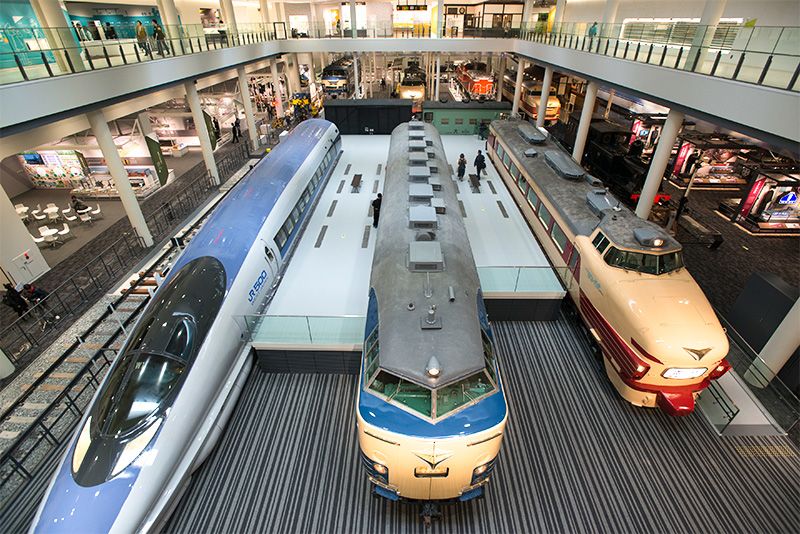 From left, a 500 series Shinkansen (built 1996), 581 series express with sleeping cars (built 1968), and a 489 series express (built 1971).
From left, a 500 series Shinkansen (built 1996), 581 series express with sleeping cars (built 1968), and a 489 series express (built 1971).
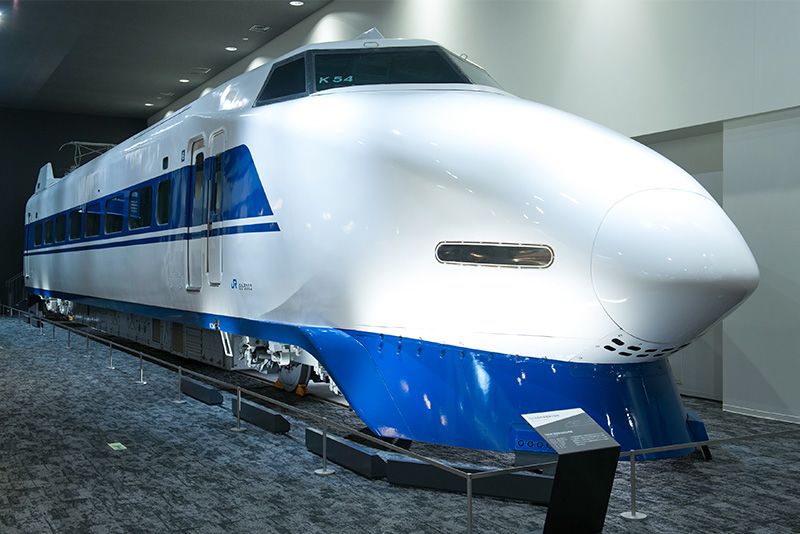 The 100 series (built 1989) used on the Tōkaidō and San’yō Shinkasen Lines.
The 100 series (built 1989) used on the Tōkaidō and San’yō Shinkasen Lines.
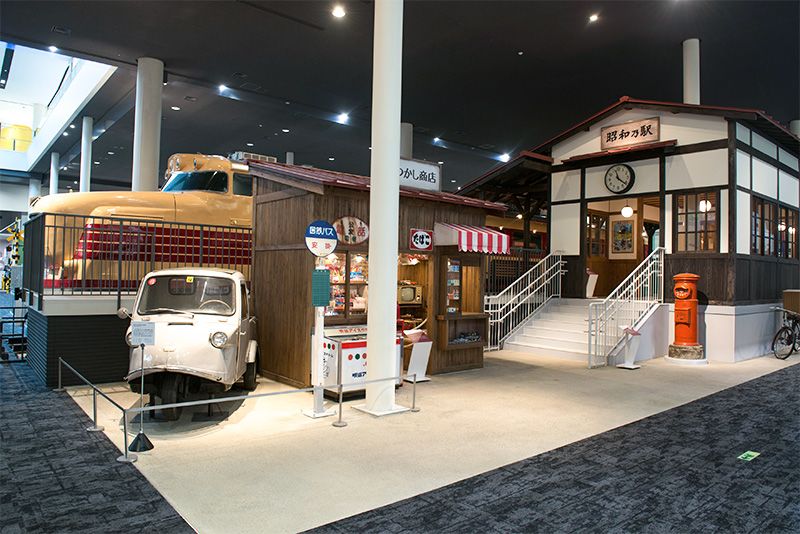 An exhibit of a Shōwa era (1926–89) train station demonstrates how times have changed.
An exhibit of a Shōwa era (1926–89) train station demonstrates how times have changed.
A View of the City
The second floor of the Main Building houses a large diorama measuring 30 meters wide and 10 meters deep. Built to 1:80 scale, it features moving locomotives, Shinkansen, and commuter trains, as well as a sky that changes color from morning to night.
Perhaps just as popular as the diorama is the Operating Simulator. Visitors can wear the hats and uniforms used by motormen and have a go on a simulator used for training. The computer graphic images are true to life, recreating a variety of train lines, times of day, and weather conditions.
The third floor contains the Sky Terrace, from where trains pulling into and out of Kyoto Station can be seen—the Tōkaidō and Shinkansen Lines on the right and the San’in Line on the left. The observatory offers a panoramic view of Kyoto Tower, the temple of Tōji, the Higashiyama mountains, and other sights of the ancient capital. Says museum director Miura Hideyuki: “The view from the terrace may be more dioramic than the diorama itself.”
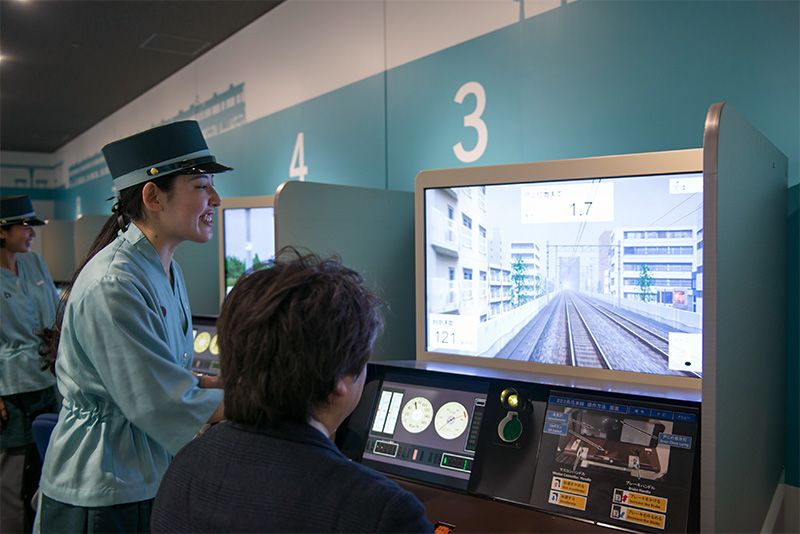 Guides are available to help visitors navigate a train on the Operating Simulator. Slowing down around curves and bringing the train to a stop at the right place can be quite challenging.
Guides are available to help visitors navigate a train on the Operating Simulator. Slowing down around curves and bringing the train to a stop at the right place can be quite challenging.
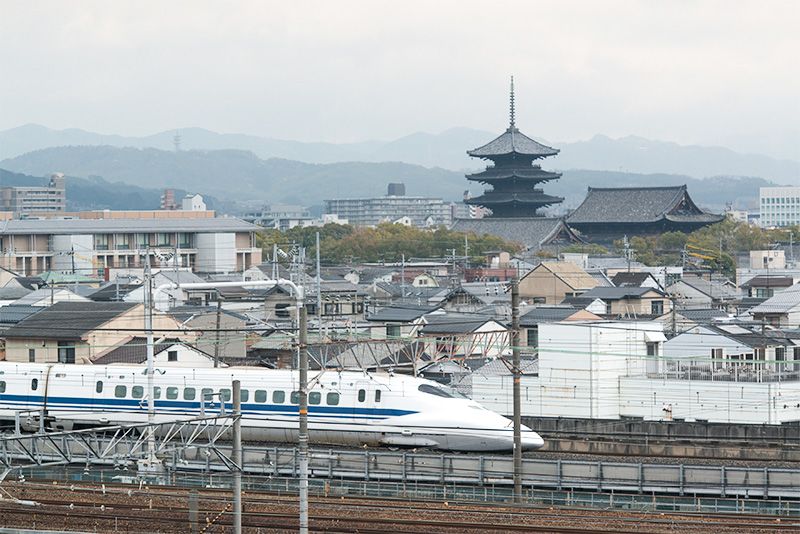 A view of both traditional and modern Kyoto from the Sky Terrace.
A view of both traditional and modern Kyoto from the Sky Terrace.
A Transport Hub for Over a Century
The Umekōji district where the museum is located has a long association with Japan’s rail network; it has served as a transport hub for over a century, ever since two steam locomotive depots in Kyoto were conglomerated here in 1914. It was then that the 20-track roundhouse—a prominent feature of the new museum—was built. At the time, the shed was a technically advanced structure built with reinforced concrete.
The Umekōji depot subsequently expanded as a shed housing trains on the main Tōkaidō and San’yō routes, including the prewar Tsubame express linking Tokyo and Kobe and the postwar Kamome express between Kyoto and Hakata. At its peak in 1946, Umekōji was the home of 87 trains.
But from around the mid-1950s, with the shift to electric or diesel engines, locomotives began to fade, not just from the Tōkaidō and San’yō Lines but across the country. The last locomotives in the Umekōji district were those on the San’in Line, and these were retired in 1971.
Even after the locomotives were taken out of service, the then Japanese National Railways decided to maintain the steam engines in running condition, and Umekōji, which had served as a hub for many years, was selected as the servicing center. In 1972, on the centenary of the first train service in the country, the Umekōji Steam Locomotive Museum opened to the public.
Like the Umekōji museum, the National Railway Museum in York, England, also maintains steam locomotives in a condition that allows them to run on existing, commercial routes. While York is on a larger scale, Umekōji opened three years earlier and can be said to have been a global pioneer among railway museums.
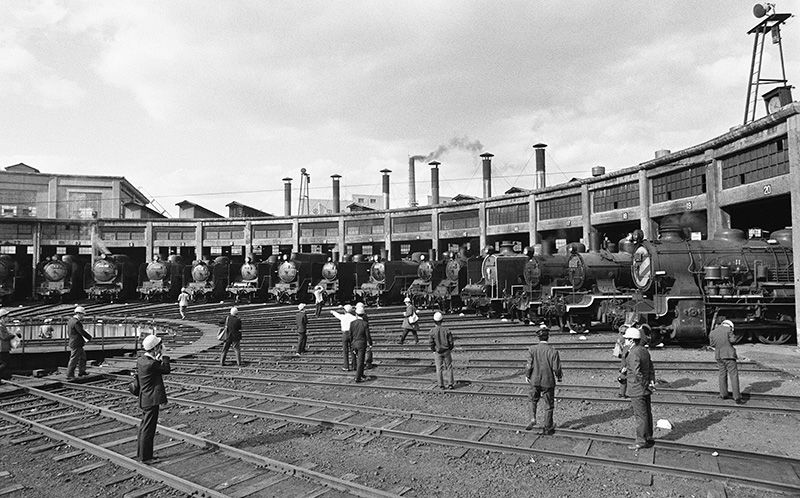 Seventeen locomotives from around the country are gathered at the roundhouse prior to the opening of Umekōji Steam Locomotive Museum on November 24, 1971. © Jiji
Seventeen locomotives from around the country are gathered at the roundhouse prior to the opening of Umekōji Steam Locomotive Museum on November 24, 1971. © Jiji
The locomotives previously on display at the Umekōji Steam Locomotive Museum can be viewed at the Kyoto Railway Museum as well. A newly built Connecting Deck gives visitors a full view of not only roundhouse and turntable but also the Service Shed where the steam engines are actually maintained.
Of the 23 locomotives at the museum, 8 are kept in working condition, which take turns to carry passengers along a 1-kilometer route near the museum every 15 to 30 minutes from 11:00 to 16:00. This is the only museum in Japan where visitors can ride a real steam locomotive every day.
Near the exit is the Former Nijō Station House that was originally built in 1904. It is the oldest surviving wood station house in the country, and it contains exhibits of steam locomotives and a museum shop.
The Kyoto Railway Museum boasts 30,000 square meters of floor space, making it the largest facility of its kind in Japan. The adjacent Umekōji Park contains a plaza where streetcars that served the city between 1895 and 1978 are displayed; visitors can ride the first streetcar to be operated in the country on weekends and holidays. They can also board the Sagano Romantic Train—with breathtaking views of the Hozugawa ravine—by taking the San’in Line from Kyoto Station. These various attractions make Kyoto an essential destination for rail enthusiasts.
Outline of the Kyoto Railway Museum
Hours:10:00 to 17:30 (last admission 17:00)
Closed:Wednesdays
AdmissionAdults: 1,200 yen
University and high school students: 1,000 yen
Junior high and elementary school students: 500 yen
Children (3 years and older): 200 yen
Audio guide available in English, Japanese, Chinese, and Korean